August 13, 2025
AI Image Generation Tools can help us visualise the long-term effects of relying solely on AI to create content for your brand.

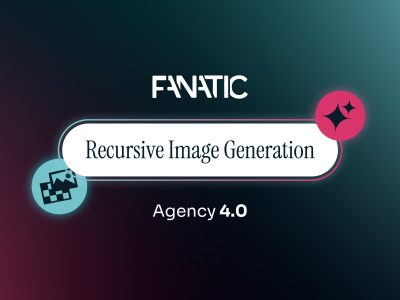
Since the autumn of 2022, AI Image Generation tools have been available to the general public through platforms such as DALL-E, Midjourney and Stable Diffusion (among many others). These tools have evolved rapidly from experimental novelties with limited capabilities to sophisticated systems that can produce professional-quality imagery capable of deceiving even trained observers.
One of the most common early applications of Image Generation was creating imagery for the established “Galaxy Brain” meme format, where users prompted AI models to generate increasingly absurd visuals to accompany text content. Similarly, “Make It More” memes became popular, with users creating exaggerated stereotypical representations of people from specific countries or communities.
Whilst these early use cases demonstrated AI tools’ effectiveness at creating abstract and surreal art, they also highlighted concerning tendencies. The models show an ability to amplify stereotypes and social biases when prompted to do so. This has led to ongoing discussions about responsible AI development and the implementation of safety measures to prevent harmful outputs.
As the technology has matured, we’ve seen a dramatic shift towards professional applications. By the publication month of this post (August 2025), advanced prompting techniques such as JSON prompting (using structured data formats to guide generation) and context prompting (providing detailed background information to improve accuracy) now enable users to produce professional-quality imagery with a fraction of the time and cost traditionally required for commercial artwork.
Unfortunately, these AI systems can become victims of their own success. As users increasingly save and reuse AI-generated images as reference material or direct inputs for new creations, the quality of subsequent outputs can diminish. This creates a feedback loop where AI-generated content is fed back into AI systems, causing the results to become increasingly derivative and lose the original creative spark that made the initial outputs compelling.
To demonstrate this problem, I have taken a photo of myself from the Fanatic website and ran it through ChatGPT to recreate it without making any changes.
“I want you to recreate this image exactly, in a realistic style with no changes or enhancements.”
ChatGPT Prompt.
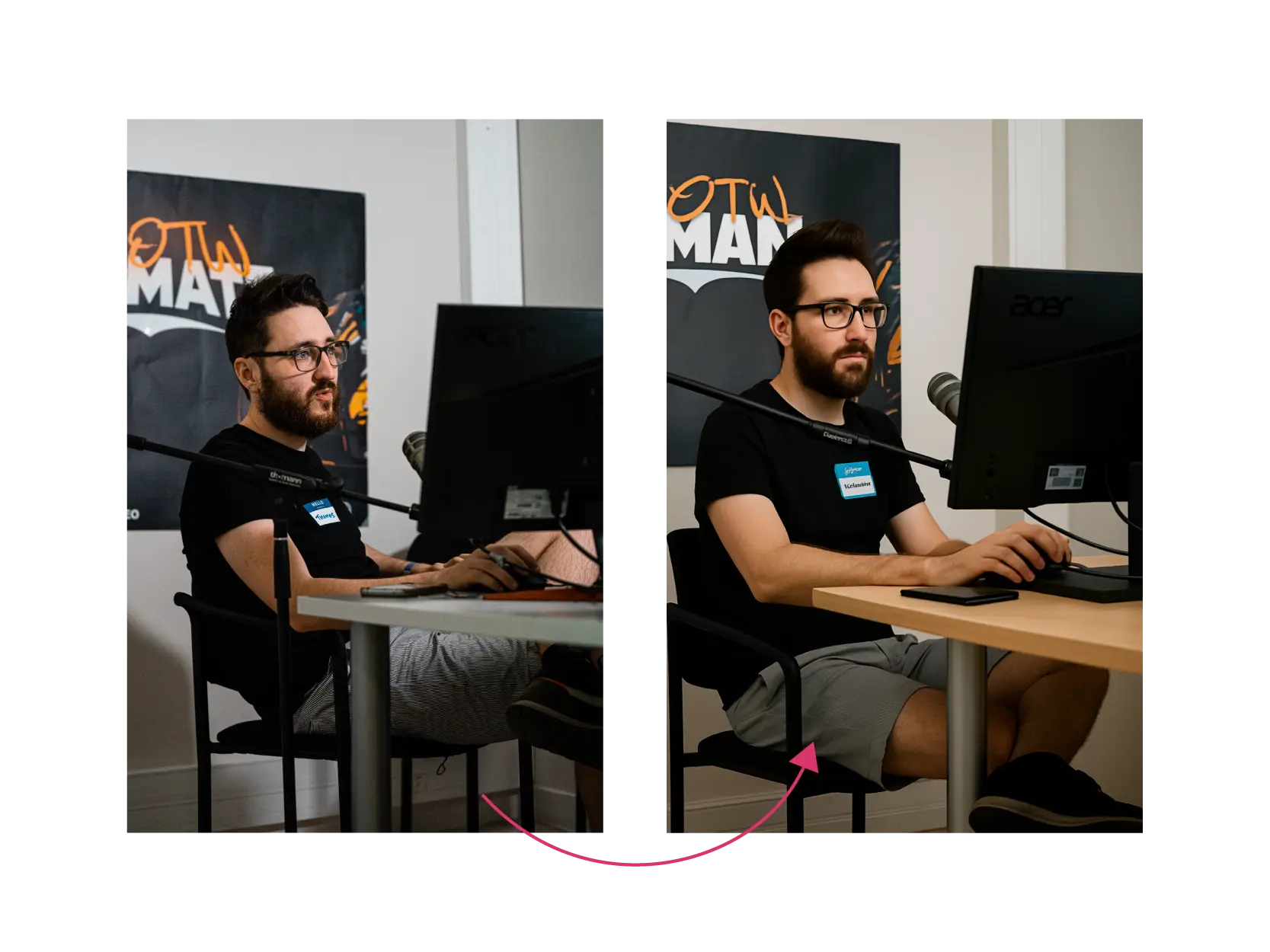
As you can see in the first generation, there is already a significant amount of detail degradation. My posture has changed, the microphone stand has disappeared, the table is a completely different material and my hands have started to merge. On top of that, my skin has become dramatically smoother, my beard has been better maintained and my hair looks like considerable effort has gone into styling it.
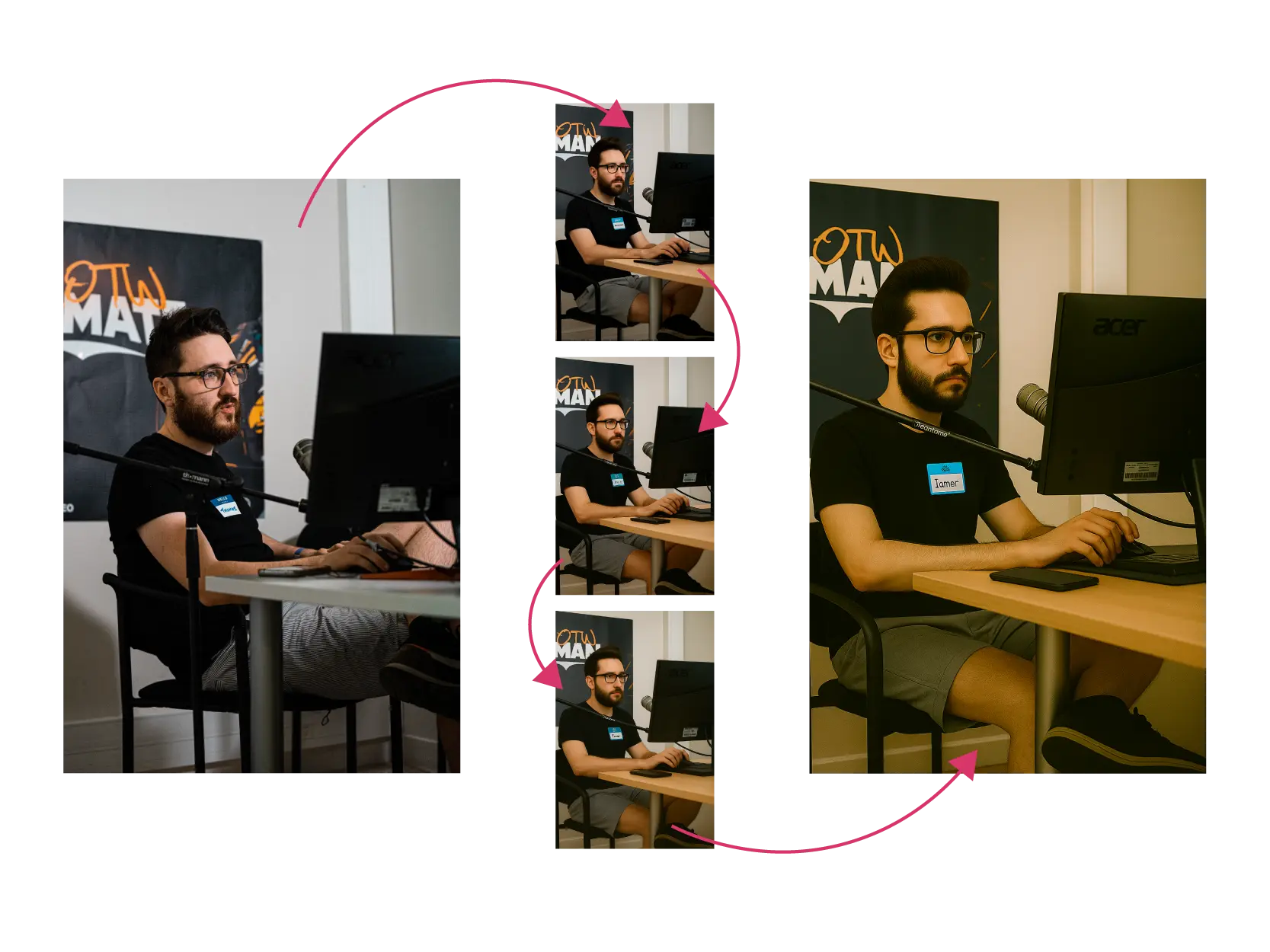
As we continue this process, feeding the previous image back into the system, it continues to amplify these changes. By the fourth generation my hands have merged into one, my expression is completely lifeless, the image has taken on a sepia tone and my head is rather oversized compared to the rest of my body. All text on the image has completely changed, other than the ACER logo on the monitor, and the image is starting to fall deeper into the uncanny valley.
While this experiment demonstrates the recursive degradation problem, it’s worth noting that my original prompt leaves a lot to be desired. Although the intention was to showcase a typical new user’s output, we can give the image generation tool more guidance through better prompting. So, I worked with Claude (my LLM of choice) to help craft a more detailed prompt for recreating this image and ran the experiment again.
I need you to analyze this uploaded image in complete detail and then generate an exact visual recreation of it. Please follow these steps:
- Detailed Analysis: Examine every visual element including:
- Overall composition and layout
- All objects, people, animals, or structures present
- Colors (specific hues, saturation, brightness)
- Lighting conditions and shadows
- Textures and materials
- Perspective and depth
- Style (photographic, artistic, cartoon, etc.)
- Background and foreground elements
- Any text or symbols visible
- Technical Specifications: Note the apparent:
- Image ratio/dimensions
- Quality and resolution characteristics
- Photographic settings if applicable (depth of field, etc.)
- Recreation: Generate an image that matches the original as closely as possible, maintaining:
- Identical composition and positioning
- Same color palette and lighting
- Matching style and artistic approach
- All visible details and elements
- Same mood and atmosphere
Please be extremely thorough in your analysis before generating. If any aspect is unclear or ambiguous, make your best interpretation while staying as faithful as possible to the source material.
Refined ChatGPT Prompt.
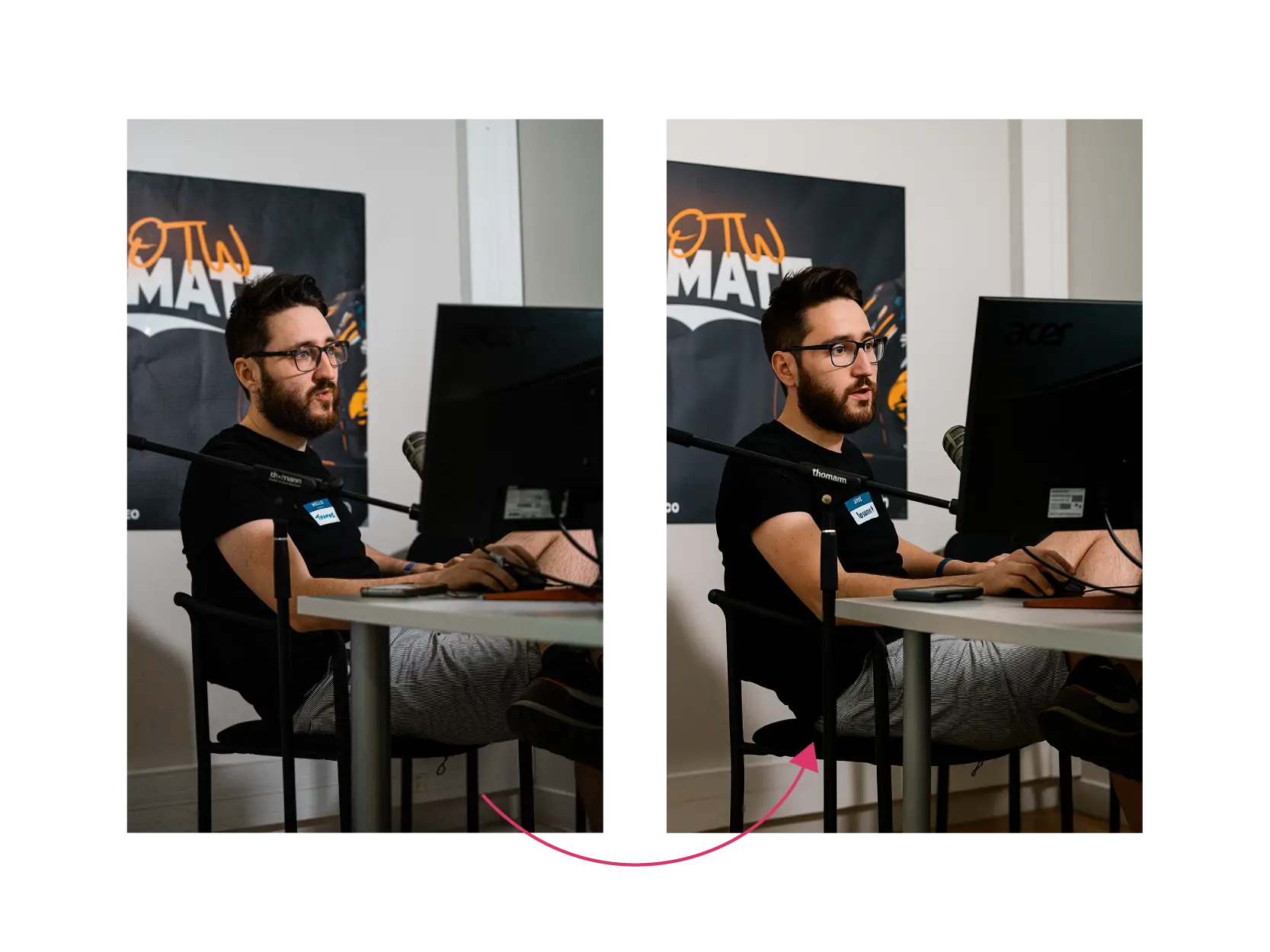
The first generation using this refined prompt shows significant improvement. While some detail has been lost (the missing tape on the microphone cable) and my skin has been smoothed once again, even an experienced AI user would likely not immediately identify this as AI-generated. The main giveaway comes from the text elements, with both the microphone arm logo and name tag changing considerably.

By the fourth generation, we really start to notice the imperfections and the system’s inherent biases. The detailed prompt has helped retain many technical aspects of the image (my posture, composition, and objects in the shot), but it seems to have amplified the most problematic elements of AI image generation. My expression has become one of complete surprise, a finger has vanished from my right hand, and the text has either degraded to illegible mush (name tag) or lost all visual character (the microphone arm logo).
Rather than falling into the uncanny valley, this fourth generation has moved in the opposite direction entirely. The image has developed a distinctly cartoon-like quality, with my entire body (except my bent left leg) taking on a smoothed, Pixar-esque appearance. Despite the refined prompt and the initial improvement over the first experiment, the final output has become less realistic than our original, cruder attempt.
This demonstrates a key limitation: while better prompting can improve individual generations, it cannot prevent the fundamental degradation that occurs when AI-generated content is fed recursively back into the system. Indeed, initial improvements can end up causing more severe degradation further down the line.
When using AI systems it is important to ensure that you retain strong elements of human creativity and output throughout the process. While I don’t believe there are many people recursively feeding the same AI image directly into an image generation tool, I do believe that we are reaching a problem where so much of the content online is being generated with AI that you have to be incredibly careful when curating your inspiration and references to not let these images influence your creative process.
As a designer, Pinterest was once a large catalogue of inspiration that could help spark creativity. Depending on what you search, it is now often filled with AI generated imagery that can appear technically and aesthetically brilliant but has the potential to degrade your final output. The same pattern is emerging across Google Images and social media platforms, where AI-generated content is increasingly displacing human-created references.
This problem extends beyond images of people. While humans have evolved sophisticated abilities to detect unnatural elements in faces, we lack the same intuitive detection skills for AI-generated images of objects, animals, or scenes. The same limitation applies to AI-generated music and text. A trained designer can spot the inconsistencies in AI Generated images, a trained musician can identify the telltale signs of recursive music generation, and an experienced writer can spot the degradation in recursively generated text. When using AI tools, it is crucial to work within our areas of expertise. This allows us to leverage our domain knowledge to recognise when outputs have degraded beyond acceptable standards.
As an example, I ran the same AI image generation experiment on an image of my cat. Even though I have lived with this cat for over half my life, I would not be able to identify the fourth generation output as AI-generated at first glance. The model exhibits all the same biases and tendencies as it did when generating human faces, but because I lack the expertise to spot subtle anatomical inconsistencies in cats, the degradation is not immediately obvious to me.
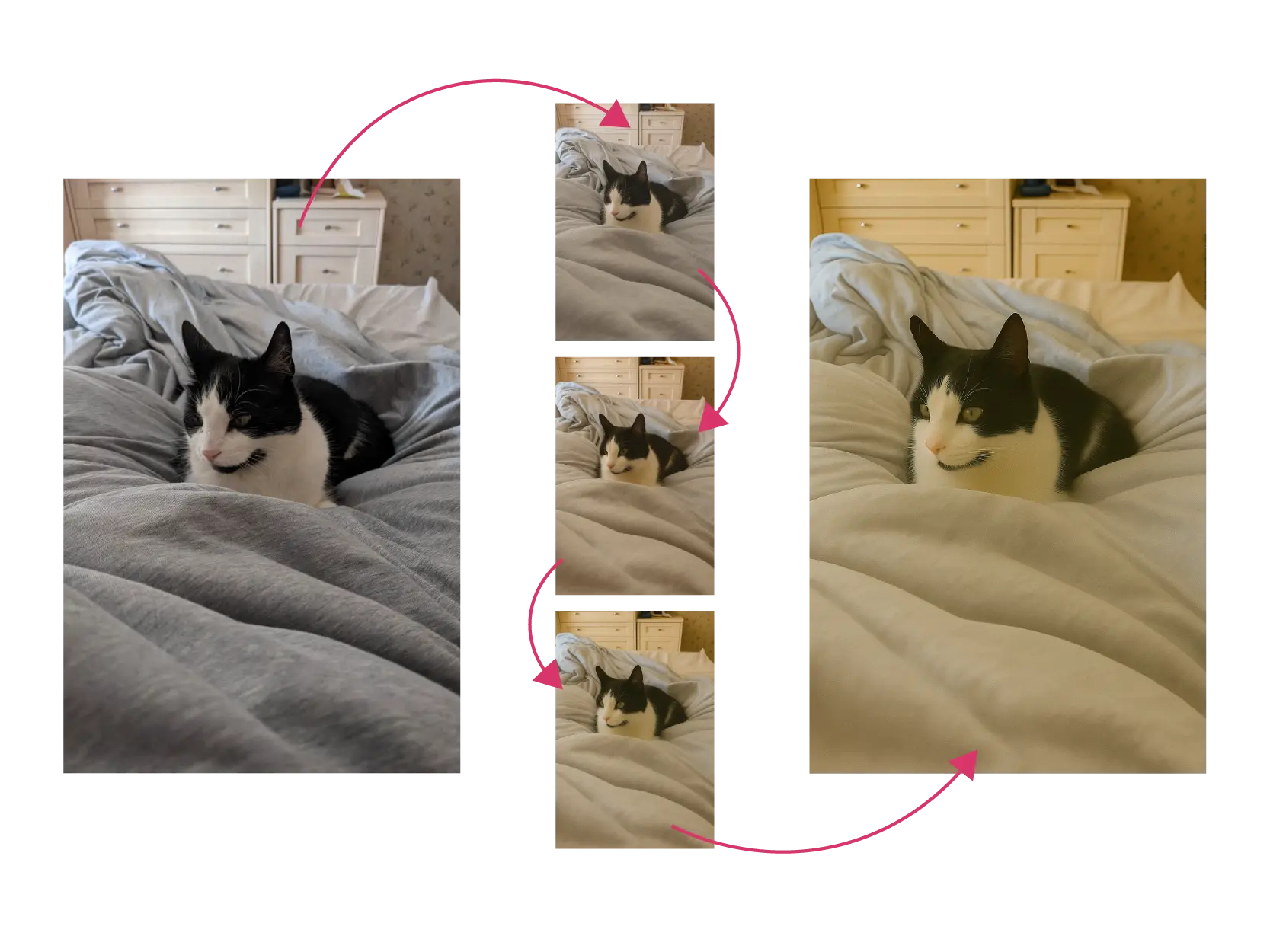
This highlights the importance of understanding the challenges and long-term implications of relying on AI-generated content for your brand. Without careful consideration and a professional intuition, the assets you create will gradually lose the distinctive qualities that made them unique in the first place, reverting to homogeneous and generic outputs that will disappear into the vast sea of similar content.
The author wrote this blog post independently, using Claude AI as an editorial tool to review grammar, improve sentence clarity, and verify factual references. All creative content and analysis originated from the author.
https://knowyourmeme.com/memes/galaxy-brain